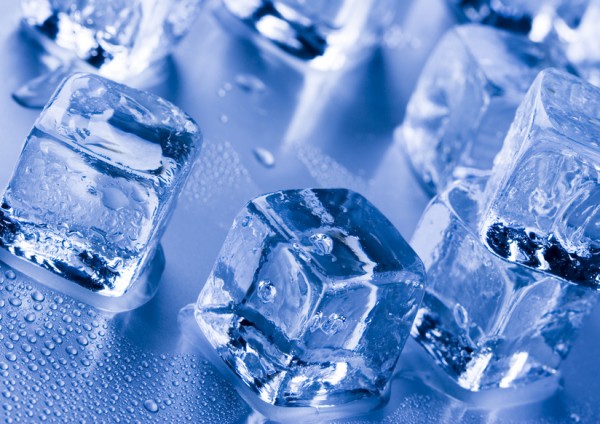Most commercial ice makers are vertical standing and have the ability to make large quantities of ice in short periods of time. These are perfect sized machines for restaurants, hotels, stadiums, and other places that need large quantities of ice quickly. These ice machines produce ice in a way that freezes the ice to be clear, and not cloudy like ice you might take out of an ice tray from your freezer. This is because the ice in your freezer has air bubbles in it due to it freezing from the outside in, much like a lake or pond. A commercial ice maker freezes from the inside out so they make clear, uniformly shaped ice.
While commercial ice makers can have different specs and features from one another, they typically work based on the same principals. Water is pumped into the machine via a water pump at the back of the unit. The water then travels to the ice mold, called the evaporator, which is connected to coiled copper heat exchanging pipes.. While this is happening, the compressor, which is the heart of any refrigeration machine, pushes refrigerant through the copper piping which will both heat and cool the water and ice.
Every ice machine contains some sort of refrigerant gas which the compressor pushes through the system. When the machine is turned on the compressor increases the pressure of the refrigerant which affects the temperature. As it goes through the narrow tubes, the refrigerant looses heat and is condensed. As the fluid travels through an expansion valve it begins to evaporate and turn into a gas. When this happens, the process creates energy in the form of heat from the copper pipes and any air that is surrounding the refrigerant and pulls the heat from the pipes and the evaporator (ice mold). At this point, the water which is flowing over the evaporator begins to freeze.
After the ice cubes form, the evaporator sensor triggers a valve which tells the compressor to stop forcing heated gas into the condenser and instead directs it to a bypass valve. From the bypass valve the hot gas cycles through the evaporator without cooling off and this process allows it to quickly heat up and loosen the ice from the tray without melting it. The ice then falls into the ice bin where it can be scooped by hand or dispensed automatically. Once the ice is dropped, the process starts all over again.

